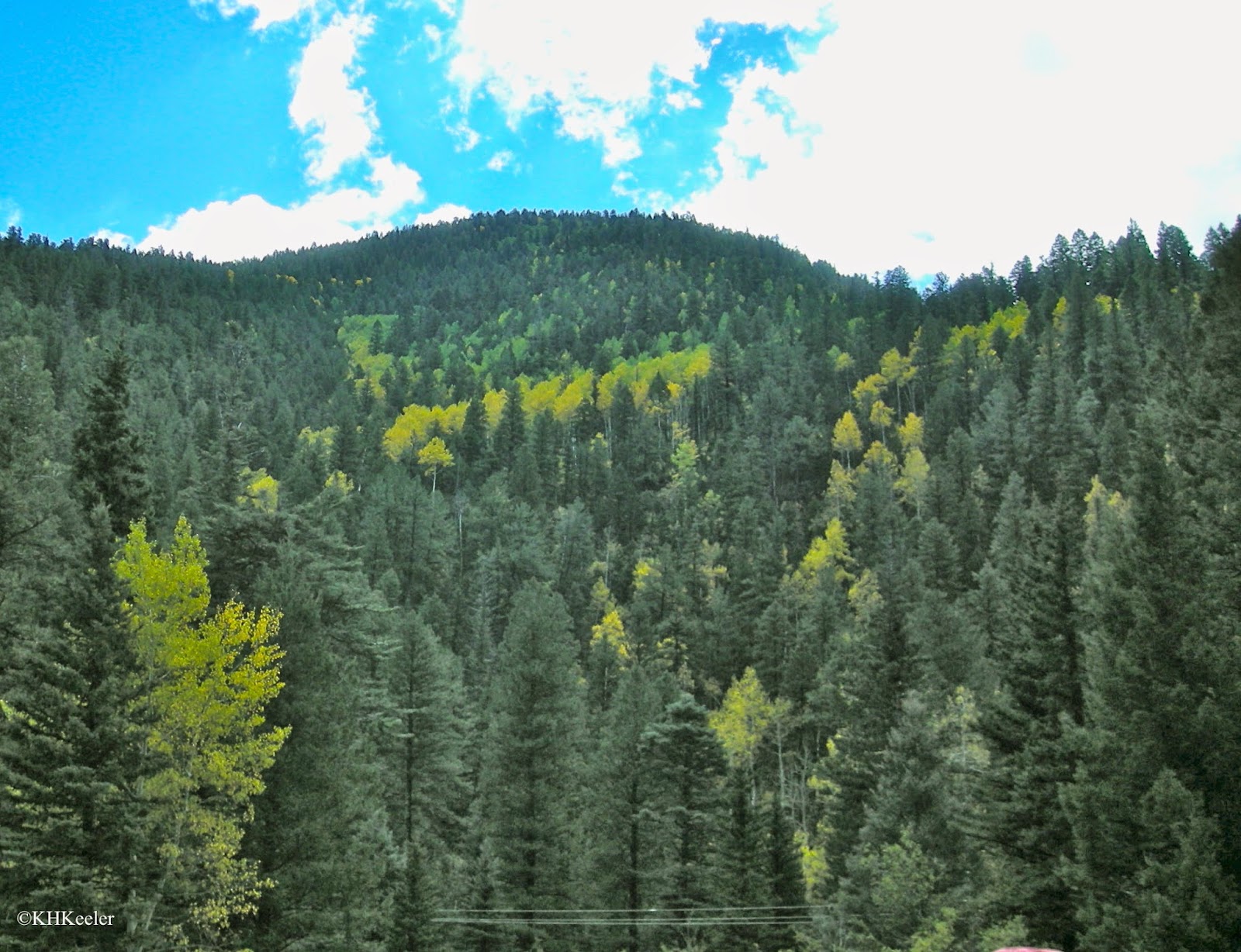Though you may also know some of its relatives, in North America you are likely to know it as well. Quaking aspen is the most widespread tree of North America. Of something like 1,000 trees in North America, it is Number One. Aspen is found from northern Canada to Mexico, from the Pacific to the Atlantic coasts (map at USDA Plants). The elevational range is also great, from sea level to 10,000'.
Widespread plants generally are well-studied and aspen is no exception. Botanists and foresters observed that aspen tended to grow on disturbed sites, seedlings were hard to find and, especially in the West, formed big patches. Since it vigorously spread from shoots off the root system, the patches were frequently clones--single individuals with many trees growing off the same root system. In the Rockies in autumn, that can be very obvious, because the fall colors of different clones can differ in color.
In eastern North America aspen was seen to form clones as well, but those were not extensive. In the West, however, some were huge. In 1976 Kemperman and Barnes measured a clone in central Utah which was massive. Using physical characters--leaf, flower, stem and trunk characteristics--they determined it was about 113 acres in extent. (Consider: a football field in the US is 1.3 acres, so that's about 86 football fields). They named it Pando, Latin for "I spread". Kemperman and Barnes and subsequent researchers have argued that Pando is the largest (most widespread) organism and heaviest organism on earth. A series of fungi hold the largest organism records (see link) but Pando is recognized as the largest plant and individual tree. The estimate of 47,000 trees that are all part of the Pando clone, however, make it clearly the heaviest single organism on earth. Thus, aspen holds the record for both largest plant and heaviest organism.
A few years ago a team of researchers revisited Pando and used DNA techniques to check whether all those trees are really genetically identical (DeWoody et al. 2008). The results both confirmed the previous findings and helped change the way we look at aspen. They found that Pando is extensive--still the biggest plant and heaviest organism--with thousands of stems across 106 acres. In addition all around Pando are aspen trees very like Pando but that differ by 4 or more genetic markers, 40 of them. Almost all 40 were found in one spot only (single trees), so we have the image of Pando surrounded by its children. Because even the experts rarely see an aspen seedling, western foresters had worried that the west was too dry and that aspen had been reduced to only reproducing by shoots from the roots, never by seed. The Pando study and other recent work indicate that aspen do reproduce by seed. They don't have to do it very often: if you imagine a stable forest with the same % aspen for centuries, then each aspen clone, living several hundred years or more, only needs one surviving seedling to maintain the aspen population at previous numbers. One surviving seedling in 100 years--let alone 1000--will be difficult to observe.
No longer seriously afraid that aspen is going to slowly die out because it isn't reproducing by seed, the people in the Colorado Rockies now worry that because so many pines have been killed by pine beetle (link), aspen will take over from the pines, spruces and firs. I don't think that is likely. The conifers grow slowly but they can tolerate the shade of aspen, grow taller than aspen and live longer. As they have after disasters in past millenia, they will seed in, grow up over the aspen and either shade it out or wait it out. The color combinations in of the Rocky Mountain forest may change with larger areas turning gold in the fall while the pines, spruces and firs are small, and more scattered patches of color as the conifers mature.
A more serious threat to Rocky Mountain forests is human development. We put in roads, houses and towns, removing the native trees for all of those. I was struck, driving Rocky Mountain National Park, that all around me was native forest. Where I live at the base of the Rockies, intact fields or woods of native plants are tiny islands amid a human environment. The Park has kept large areas of native vegetation intact and, except for roads, continuous. I like good roads and convenient shops, but they are really hard on native plants and animals.
All across North America you will encounter aspen. Since it's familiar, we walk by without noticing it. But its a remarkable plant!
Comments and corrections welcome.
References
De Woody. J. C. A. Rowe, V. D. Hipkins, and K. E. Mock. 2008. "Pando" lives: molecular genetic evidence of a giant aspen clone in central Utah. Western North American Naturalist 68(4): 493-497.
Long, J. N. and K. Mock. 2011. Changing perspectives on regeneration ecology and genetic diversity in western quaking aspen: implications for silviculture. Canadian Journal of Forest Research 42: 2011-2021.
Kathy Keeler
More at awanderingbotanist.com






No comments:
Post a Comment